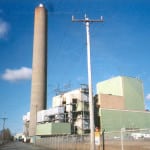GenOn has begun its transition back into a standalone power generation company after NRG Energy—which acquired it in a $1.7 billion deal just five years ago—struck a comprehensive restructuring agreement with GenOn’s creditors, and GenOn filed for Chapter 11 protection.
A June 14 financial filing confirms that NRG, GenOn, and an ad hoc group of GenOn noteholders finalized a proposed agreement reached on May 22 for a $234 million cash payment from NRG in return for the release of all outstanding claims against the Princeton, N.J.–based company, and a 100% transfer of GenOn’s equity to unsecured noteholders. The proposed agreement required approval from its different creditors, and it was widely expected to be finalized before June 15, when $690 million of unsecured GenOn notes are due.
GenOn will now implement the restructuring through a prearranged reorganization plan in a voluntary case filed with the U.S. Bankruptcy Court for the Southern District of Texas under Chapter 11 of the U.S. Bankruptcy Code. It will affect GenOn Energy and GenOn Americas Generation, but not its indirect wholly-owned subsidiary, GenOn Mid-Atlantic, which operates, owns, or leases 4.6 GW of net power capacity in Maryland.
When the process is complete, as is expected in a few months, the deal will essentially deliver $1.75 billion to GenOn’s balance sheet and revamp its capital structure, so that it will reemerge with all new debt instruments.
The company will also take back at least 15.4 GW under NRG Energy’s controlling interest in a 46-GW portfolio. For NRG, the agreement is an “important next step for NRG as part of our commitment to the comprehensive restructuring of GenOn, enabling us to achieve our objectives of simplifying NRG and maintaining a strong balance sheet,” said the company’s president and CEO, Mauricio Gutierrez, in a statement to POWER on June 14.
According to credit analysis firm DebtWire Analytics, while the restructuring plan will held erode GenOn’s debt by more than $2 billion, its future profitability may not be guaranteed. About 58% of GenOn’s assets are in the PJM market and about 51% of its fleet is coal-fired. Substantial price declines in PJM driven in large part by a glut of cheap shale gas could pressure the company’s bottom line and force it to retire more uneconomic plants over the next several years, DebtWire projected.
“On its own, this filing does not affect the energy sector as a whole as there is no capacity reduction planned,” noted Yulia Latysheva, credit analyst at Debtwire. She, added, however, that GenOn’s debt problems are part of a larger trend affecting merchant generators in the U.S.
Other independent power producers facing financial troubles similar to GenOn’s include FirstEnergy Solutions. That company, which operates primarily in PJM, is a “distressed power generator with over levered capital structure, weak and declining cash flow and upcoming 2018 debt maturities.” It is expected to restructure in the future, she said.
Latysheva also pointed out that Panda Temple Power, an affiliate of privately owned developer Panda Power Funds, which put a 758-MW natural gas-fired generator online in 2014 to serve the Electric Reliability Council of Texas, filed for bankruptcy this April. Homer City Generation, operator of a three-unit, 1,884-MW coal-fired plant in Pennsylvania also initiated a voluntary, pre-packaged Chapter 11 case this January.
“All these companies experienced revenue, cash flow and liquidity challenges due to the deteriorating market conditions caused by weak demand for energy and low natural gas prices,” said Latysheva. “Generators with coal-fired facilities have experienced additional pressure in recent years due to increasing accessibility and supply of natural gas, more stringent environmental regulations, and improving technologies in renewable production.”
—Sonal Patel is a POWER associate editor (@sonalcpatel, @POWERmagazine)










